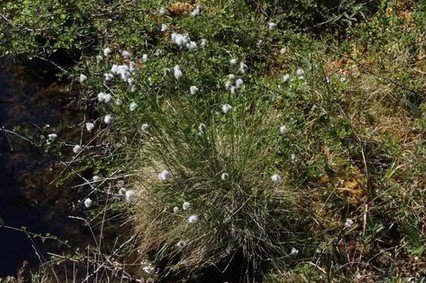Georgia’s cotton farmers are facing a fresh crisis this season. A tiny invasive insect, the cotton jassid, has already swept across huge swaths of farmland, and its impact could ripple from rural fields all the way to store shelves.
A Pest That Arrived Without Warning
The first sighting of the cotton jassid came in Seminole County in July. By early September, the insect had spread to nearly half of Georgia’s cotton-growing land. That’s no small thing in a state that plants more than 825,000 acres of cotton each year.
The jassid isn’t a beetle or worm that chews leaves. Instead, it pierces them and injects toxins. Farmers walking their fields spot curled leaves, yellowed patches, and plants that look like they’re starving. When photosynthesis breaks down, cotton bolls weaken, and the fibers lose their strength.
For growers, the speed of destruction is shocking. Some fields have gone from healthy to almost unsalvageable in just two weeks. “It just seems like every year we get thrown a curveball,” said Lee Nunn, a farmer in Madison County. “I’m passionate about farming and cotton. But when you add invasive species like this, it makes us wonder how much longer we can keep going.”

Farmers Counting the Costs
Cotton has long been Georgia’s top row crop, bringing in close to $1 billion annually. But the math is looking grim. The insecticide treatments alone could cost farmers up to $20 an acre.
For a grower managing 1,500 acres, that’s $30,000 in new expenses almost overnight. And that’s before considering potential yield losses if treatments don’t work.
Some producers are already asking themselves if it’s worth planting cotton next season. Others worry about the knock-on effects for local economies. Without cotton, gins and warehouses that depend on steady supply may shut their doors.
Taylor Sills, executive director of the Georgia Cotton Commission, put it bluntly: “We risk losing gins, warehouses — our entire cotton infrastructure. And if that goes away, the cost of cotton products goes up for everyone.”
What the Science Is Showing So Far
University of Georgia researchers have scrambled to respond. Extension agent Lucy Ray admits the speed of the outbreak has taken everyone by surprise. “This is a pest we don’t know much about,” she said. “We’ve seen fields crash in as little as two weeks from the first identification.”
Trials are underway to test different insecticides and fertilizer mixes. Camp Hand, a UGA researcher, explained that side-by-side plots are already revealing stark contrasts. Treated cotton looks almost normal, while untreated plants show yellowing and collapse.
But there’s a catch: nobody knows yet how much yield farmers can save. Even with spraying, the damage may already be baked in for 2025’s harvest.
One farmer compared it to “trying to plug holes in a dam after the water has already started rushing through.”
A Threat Beyond the Farm Fence
The impact of the cotton jassid isn’t limited to growers. Cotton is the backbone for an entire supply chain that touches everything from jeans to bedsheets. Any disruption at the source eventually hits consumers.
And it’s not just about availability. Cotton prices on the open market have already been under pressure, and now there’s another layer of volatility. If Georgia — the second-largest cotton-producing state in the U.S. — sees sharp yield losses, mills and retailers may have to adjust.
That could mean:
- Higher prices for cotton-based products
- More imports of foreign cotton to cover shortfalls
- Financial strain on rural Georgia towns reliant on cotton infrastructure
For shoppers, the price tag on everyday essentials could tick upward in coming months, though the timing depends on how widespread the damage ultimately becomes.
How This Compares With Past Insect Outbreaks
Georgia farmers are no strangers to insect threats. Boll weevils nearly destroyed the southern cotton industry in the early 20th century. That fight took decades and led to sweeping changes in pest control practices.
Now, the cotton jassid is being watched closely to see whether it follows a similar pattern of devastation or whether quick intervention can contain it.
Here’s a snapshot comparing two key pests:
| Pest | Primary Damage | Timeline of Spread | Control Costs (Est.) |
|---|---|---|---|
| Boll Weevil | Attacks cotton bolls | Took decades | Billions over years |
| Cotton Jassid | Toxin in leaves, weakens plants | Weeks so far | ~$20 per acre spray |
The table underscores why researchers are alarmed. The jassid’s ability to spread in just weeks is a red flag, even if the immediate control costs seem smaller on paper.
What Comes Next
There’s no clear roadmap yet. Farmers are checking fields daily, waiting for updated guidance from extension offices. Many are leaning on each other for advice, trading notes about which sprays seem to hold up best.
Meanwhile, policymakers are quietly weighing whether more state or federal support may be needed if the outbreak escalates. Crop insurance could help some growers, but not all losses will be covered.
For now, cotton plants are still standing, though weakened. The bigger question is whether the state’s cotton economy — worth nearly $1 billion a year — can withstand another season like this.
